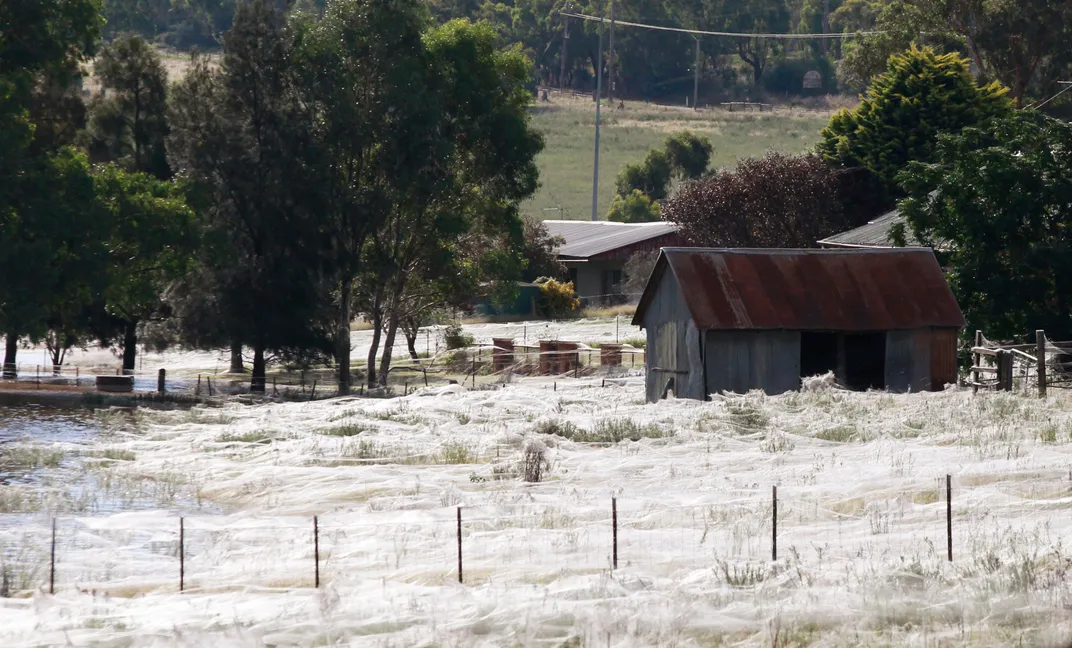No, It’s Not Really Raining Spiders in Australia
The arachnids are simply catching a ride on the wind
/https://tf-cmsv2-smithsonianmag-media.s3.amazonaws.com/filer/5e/a0/5ea03774-66b7-449e-8ed1-427034defa4a/42-53058544.jpg)
This month, a sprinkling of spiders covered the sky of a small town in Australia's Southern Tablelands. Residents of Goulburn, Australia, took to social media to report the "odd weather" they were seeing outside their windows, according to the Goulburn Post.
But, don't fret. Though a number of news outlets ran with the idea that spiders were indeed raining or falling from the sky in Australia, this particular flurry of arachnids was not of the meteorological variety.
Instead of a light spider drizzle, residents of Goulburn were likely witnessing a phenomenon where baby spiders climb onto the top of bushes, trees or other vegetation and produce strings of silk. A breeze picks them up, and they float along along on the wind. It's a migration technique called "ballooning," and spiders do it all the time. Australian Museum naturalist Martyn Robinson told the Sydney Morning Herald that "spiders have been caught flying like this up to three kilometres above the ground."
Lots of spiders going "ballooning" at the same time? Now that is a little weird, reports Elizabeth Palermo for Live Science. A few different spider species are known to "balloon" across this part of the Australian Outback either as babies or small adults in order to migrate. This usually happens in May or August.
"What's thought to be going on is that there's a whole cohort of spiders that's ready to do this ballooning dispersal behavior, but for whatever reason, the weather conditions haven't been optimal and allowed them to do that. But then the weather changes, and they have the proper conditions to balloon, and they all start to do it," Todd Blackledge, a biology professor at the University of Akron in Ohio, told Palermo.
Weather or wind pattern changes can bring the spiders to the ground en masse, covering the ground in their silky webs, as it did in Goulburn last week. A similar mass wind-riding event happened back in 2013 in Brazil.

The ground coverage phenomenon goes by the nickname "angel hair." Strong rains or flooding can also produce angel hair by driving ground spiders up into vegetation via silk webs of escape. Though in either case the spiders pose minimal risk to people, they could damage crops by blocking sunlight.
Once the weather warms, the spiders will likely disperse.
/https://tf-cmsv2-smithsonianmag-media.s3.amazonaws.com/accounts/headshot/Screen_Shot_2014-01-27_at_12.05.16_PM.png)
/https://tf-cmsv2-smithsonianmag-media.s3.amazonaws.com/accounts/headshot/Screen_Shot_2014-01-27_at_12.05.16_PM.png)